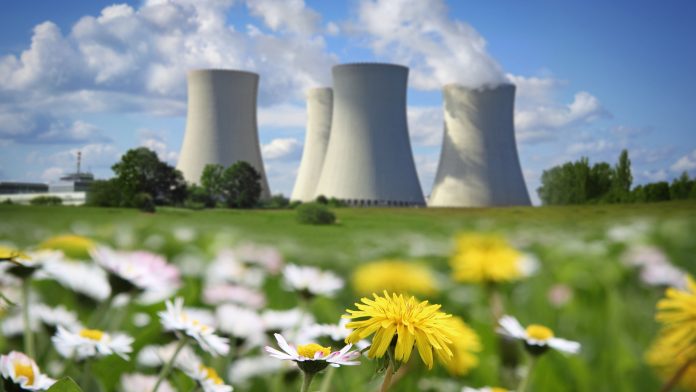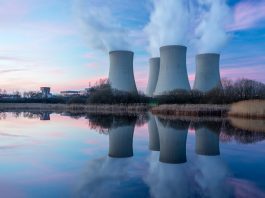The International Energy Agency has recently released a report evaluating the position of nuclear power in the clean energy transition.
Nuclear power is rapidly gaining popularity in many countries, due to rising fuel prices and growing concerns regarding energy security. However, it has been noted that the successful implementation of nuclear energy is dependent upon governments and the industry.
The International Energy Agency (IEA) has noted that the world’s contention with the global energy crisis can be aided by nuclear power. This is because nuclear power can be utilised to help countries securely transition to energy systems dominated by renewables, said the IEA’s most recent report.
Nuclear power: Reducing reliance on fossil fuels
The IEA’s report has highlighted that the countries that choose to continue or increase their use of nuclear power can reduce their reliance on imported fossil fuels, cut carbon dioxide (CO2), and enable electricity systems to integrate higher shares of solar and wind power. Thus, without nuclear power, building sustainable and clean energy systems will be harder, riskier, and more expensive.
Currently, nuclear is the second-largest source of low emissions power, after hydropower, with nuclear plants existing in 32 countries. Approximately 63% of nuclear-generating capacity is generated from plants that are 30 years or older, due to a majority being built in the aftermath of the 1970s oil shocks.
Additionally, a significant amount of developing countries have recently revealed energy strategies that include substantial roles for nuclear power, as well as the consideration of financial incentives to invest in this form of power.
“In today’s context of the global energy crisis, skyrocketing fossil fuel prices, energy security challenges and ambitious climate commitments, I believe nuclear power has a unique opportunity to stage a comeback,” explained Fatih Birol, Executive Director at IEA. “However, a new era for nuclear power is by no means guaranteed.
“It will depend on governments putting in place robust policies to ensure safe and sustainable operation of nuclear plants for years to come – and to mobilise the necessary investments including in new technologies. And the nuclear industry must quickly address the issues of cost overruns and project delays that have bedevilled the construction of new plants in advanced economies. As a result, advanced economies have lost market leadership, as 27 out of 31 reactors that started construction in 2017 are Russian or Chinese designs.”
Nuclear: Contributing towards achieving net zero by 2050
The IEA has constructed a global pathway to reach net zero emissions by 2050. For this to be plausible, scientists anticipate that nuclear power must double between 2020 and 2050, and the construction of new plants is essential in all countries that are open to this form of power. Even so, by 2050, it is projected that nuclear will only account for approximately 8% of the global power mix, which is dominated by renewables.
Thus, despite efforts made to extend the lifetimes of some existing plants, the nuclear fleet operating in advanced economies could shrink by one-third by 2030 without further efforts. Plant lifetime extensions would require substantial investment, and they typically yield a cost of electricity that is competitive with wind and solar in most regions.
The necessity of government funding
Vigorous policies are required to encourage the use of nuclear power and improve its safety. However, the report has revealed that the industry also must be more efficient at delivering projects below cost and within budget to guarantee that nuclear-generated electricity is competitive.
Thus, government funding will remain essential in mobilising new investment, not just for plants but also in developing the latest technologies. This is due to the insufficient private sector finance for such capital-intensive and long-lived assets, specifically those exposed to substantial policy risk.
Nineteen countries currently have nuclear reactors under construction, demonstrating that the recent momentum for nuclear power is likely to be further stimulated by recent increases in oil, gas, and electricity prices. In relation to this, nuclear power faces public and political opposition in some countries, and the IEA makes no recommendations to countries that choose not to make use of it in their energy output.
Small modular reactors: Essential in the path to net zero
In the IEA’s net zero by 2050 pathway, half of the emission reductions by mid-century are generated from technologies that are not yet commercially viable. This includes small modular reactors (SMRs), which are generally defined as advanced nuclear reactors with a capacity of fewer than 300 megawatts – or approximately one-third of a traditional plant. Thus, the lower cost, smaller size, and reduced project risks of SMRs could potentially improve social acceptance and attract private investment. There is increased support and interest in Canada, France, the United Kingdom, and the United States for this promising technology.
SMRs could also reuse the sites of retired fossil fuel power plants, taking advantage of existing transmission, cooling water and skilled workforces. However, the successful long-term deployment of SMRs is dependent on strong support from policymakers starting now, not just to mobilise investment but also to streamline and harmonise regulatory frameworks.









